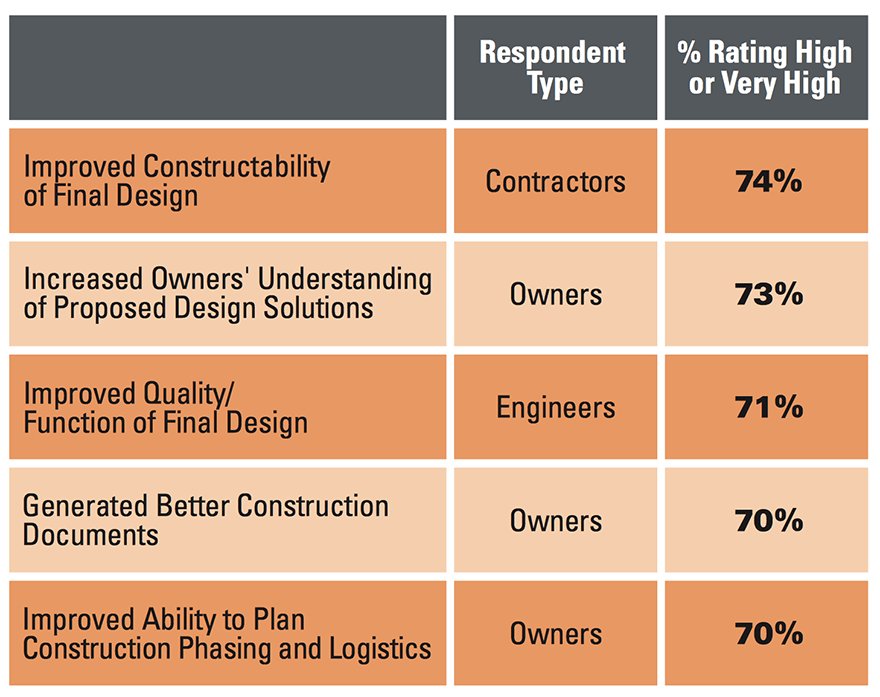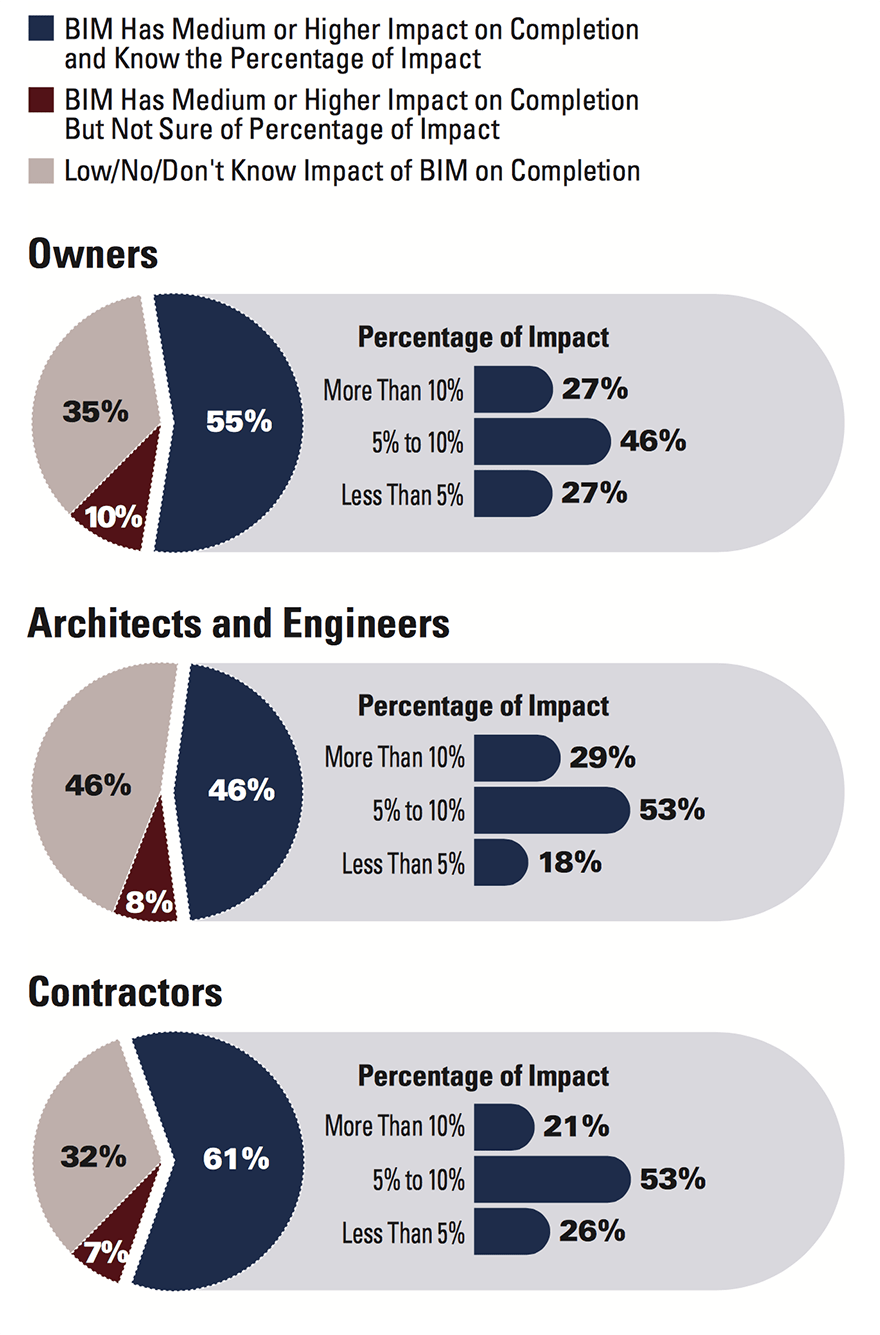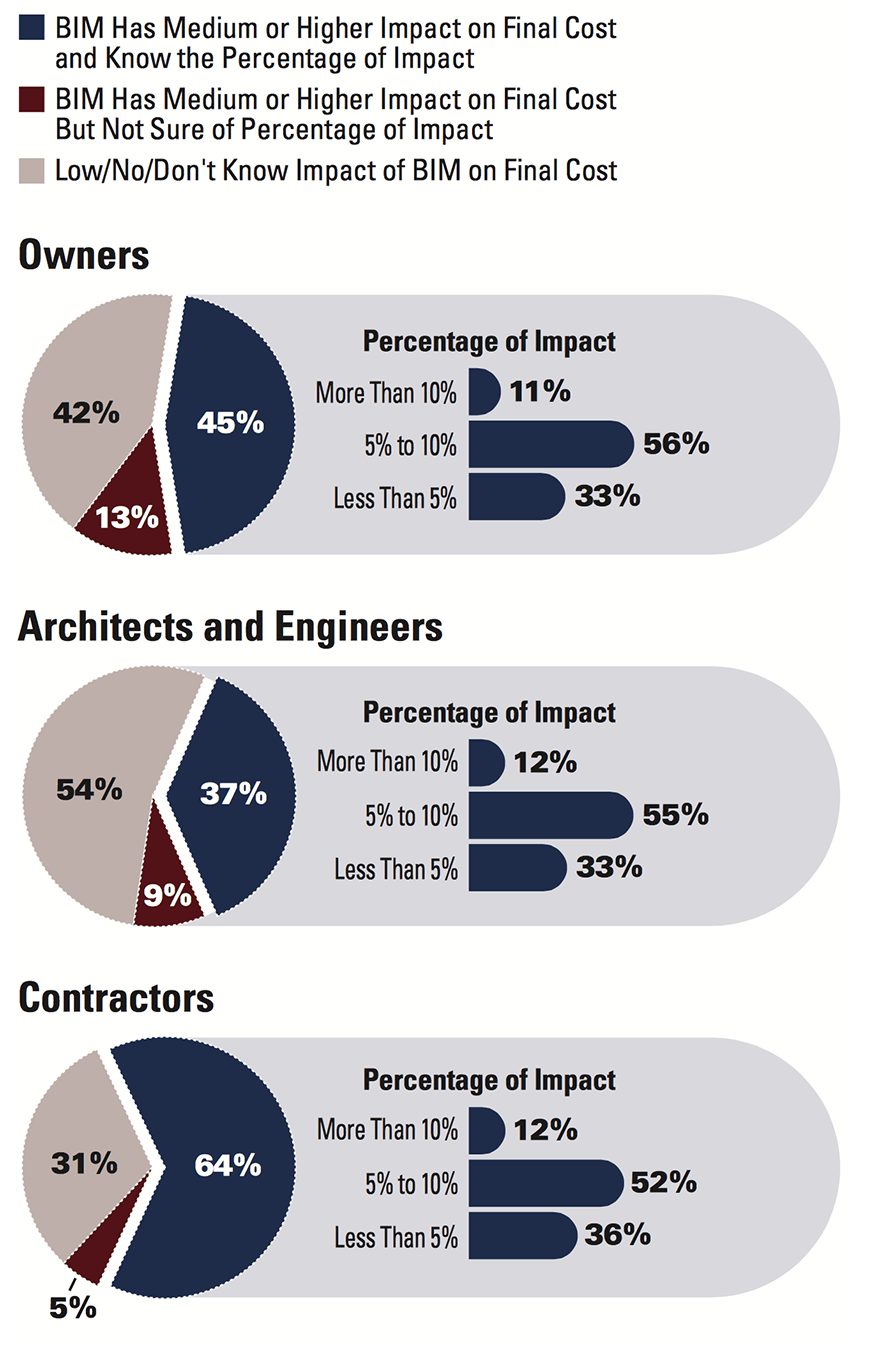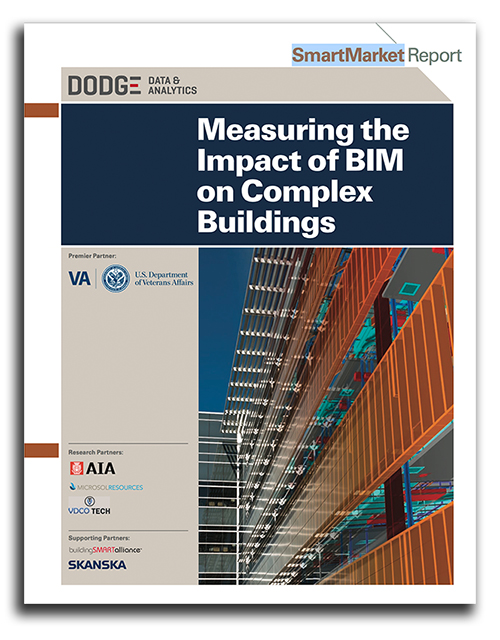The latest survey of BIM users in the USA from Dodge Data and Analytics (formerly McGraw Hill) shows that two-thirds found BIM improved productivity, 41% reported that it decreased final construction costs by at least 5%, and 41% found that it accelerated the programme by at least 5%.
The survey, Measuring the Impact of BIM on Complex Buildings, sought views from 391 clients, architects, engineers and contractors with experience of data centres, entertainment projects, hospitals, industrial/ manufacturing buildings, laboratories and transportation buildings.
The survey asked respondents to rate BIM’s impact as very high, high or medium in six different areas: cost reduction; programme; reduction of Requests for Information; reduction in reportable accidents; improved labour productivity; and reduction of site labour due to offsite fabrication.
Five top-rated positive impacts of BIM
(according to the percentage of high or very high impact ratings by type of respondent)

Source: Dodge Data & Analytics 2015
On BIM’s ability to reduce final construction costs, contractors were most likely to select these three categories (69%), compared to 58% of clients. The responses were, however, weighted towards medium impact, which the report says “signals a benefit still in development”.
Among those that do agree on the impact, there was a weighting towards the middle range of 5-10% cost reduction. But 11% of clients, and 12% of contractors, architects and engineers reported final cost savings of more than 10%.
Looking at the impact on programme, about half of each group thought that BIM accelerated projects by 5-10%. But overall, clients and consultants rated BIM’s impact more favourably than contractors: 29% of architects and engineers and 27% of clients thought that the acceleration was more than 10%, compared to 21% of contractors.
Asked about the impact on constructability, all the parties were positive on BIM, but clients particularly rated the impact on construction documentation, while contractors singled out constructability of the final design.
Percentage of accelerated project completion due to schedule compression
(according to owners, design teams and contractors)

Source: Dodge Data & Analytics 2015
However, asked about the impact on estimating and bidding, the most positive group were engineers (25% crediting BIM with a very high impact) while contractors were less impressed (10% saw a high impact).
Asked about BIM’s impact on Requests for Information, there was an interesting split: 18% of both contractors and engineers said it had a “very high” impact, but only 9% of architects – the group most likely to be on the receiving end of RFIs – felt the same.
When the survey questioned the group on BIM’s impact on reportable safety incidents, there was less conviction it had a positive impact. Only 36% of contractors rated BIM’s impact as very high, high or medium, and 38% of owners.
However, the survey says that BIM increases the likelihood that firms will experience a positive impact on safety, with 21% of those who do more than half their work in BIM experiencing a high or very impact, compared to just 5% of less BIM-experienced firms.
In comparison, the scores on reducing material waste show that 69% of contractors rated BIM as very high, high or medium, while 59% of clients agreed.
Percentage reduction of final construction cost
(according to owners, design teams and contractors)

Source: Dodge Data & Analytics 2015












